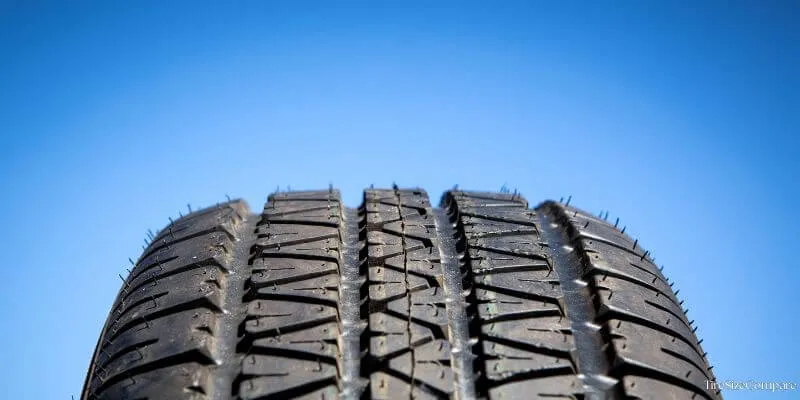What is the Revolutions per Mile of a Tire?

Revolutions per mile (RPM) of a tire is the number of times a tire completes a full rotation while traveling one mile. This measurement depends on the tire’s size, specifically its diameter.
Smaller tires will have more revolutions per mile than larger ones. Understanding tire RPM is important for vehicle maintenance, performance, and fuel efficiency.
Basics of Tire Revolutions
Think of your car’s tires as giant wheels rolling down the road. With each turn, they cover a certain distance. The number of times these wheels spin to cover one mile is what we call revolutions per mile.
Imagine you’re walking alongside your car as it moves slowly. You’d notice the tire making complete rotations. If you counted these rotations for an entire mile, you’d have the revolutions per mile for that tire.
Why Tire RPM Matters?
Revolutions per mile (RPM) matters for several reasons:
- Speedometer Accuracy: Your car’s speedometer relies on tire rotations to calculate speed. If you change your tire size without updating the vehicle’s computer, your speedometer might show incorrect speeds.
- Fuel Economy: Tire size affects how hard your engine works. Larger tires cover more ground per rotation, potentially improving fuel efficiency on highways.
- Wear and Tear: Higher RPM means more rotations and potentially faster wear. This can impact how often you need to replace your tires.
- Performance: In racing and high-performance driving, tire RPM can affect acceleration, top speed, and handling.

Calculating Tire Revolutions per Mile
To find a tire’s RPM, you need to know its overall diameter. Here’s a simple formula:
RPM = 63,360 ÷ (tire diameter in inches × 3.14159)
Let’s break this down:
- 63,360 is the number of inches in a mile
- 3.14159 is pi, used to calculate the tire’s circumference
For example, if your tire has a diameter of 25 inches:
RPM = 63,360 ÷ (25 × 3.14159) = 807.3
This tire would make about 807 revolutions to travel one mile.
Factors Affecting Tire RPM
Several factors can influence a tire’s RPM:
- Tire Size: Larger tires have lower RPM, while smaller tires have higher RPM. A 20-inch tire will have more revolutions per mile than a 22-inch tire.
- Air Pressure: Properly inflated tires maintain their intended diameter. Underinflated tires have a smaller effective diameter, increasing RPM.
- Load: Heavy loads can slightly compress tires, reducing their effective diameter and increasing RPM.
- Speed: At very high speeds, tires can expand slightly due to centrifugal force, changing their effective diameter.

Real-World Applications
Understanding tire RPM has practical applications:
- Trucking Industry: Long-haul truckers often use tire RPM to accurately track mileage for logbooks and maintenance schedules.
- Racing” In motorsports, teams carefully select tire sizes to optimize performance. They might choose higher RPM tires for better acceleration or lower RPM tires for higher top speeds.
- Off-Road Driving: Off-road enthusiasts often switch to larger tires for better ground clearance. This changes the vehicle’s RPM, affecting its performance characteristics.
Can Changing Tire Size Affect My Vehicle’s Performance?
Yes, changing tire size affects your vehicle’s RPM, which can impact speedometer accuracy, fuel efficiency, and driving comfort.
How Often Should I Check My Tire’s Revolutions per Mile?
It’s a good idea to check your tire’s RPM if you change tire sizes or if you experience significant changes in your vehicle’s performance.
Can tire RPM affect my vehicle’s warranty?
Changing to tires with a significantly different RPM may impact your vehicle’s warranty, especially if it affects the speedometer or drivetrain. Always check with your vehicle manufacturer.
Is it possible to adjust my speedometer for different RPM tires?
Yes, many vehicles allow for speedometer calibration adjustments to accommodate different tire sizes. Consult your vehicle’s manual or a professional mechanic for assistance.
Conclusion
Tire revolutions per mile might seem like a small detail, but it’s a big deal in the world of cars. From helping your speedometer work right to keeping you safe on the road, tire RPM plays a vital role.
As car tech keeps advancing, understanding concepts like this becomes even more important.
Whether you’re a car pro or just someone who wants to know more about their vehicle, grasping tire RPM can help you make smarter choices about your car’s performance and maintenance.



